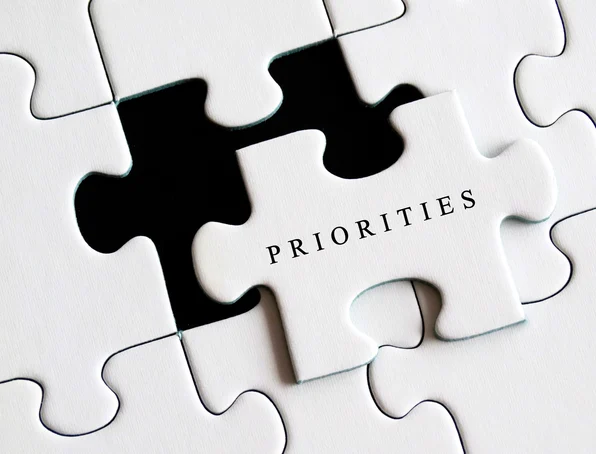There’s a lot of buzz about 5G in business, but for employers, 5G means more than just blazing internet speeds – it can stand for the five different generations, ranging from the Silent Generation to Gen Z, in today’s workplace.
Born anywhere from before World War II to after Y2K, these diverse generations all bring a unique perspective to the workplace with different values, work styles, and ideal work environments, making it tricky for employers to manage their staff.
Those, however, who can bridge this generational divide in their workplace will reap benefits in many ways.
“A 25-year-old and a 59-year-old have vastly different life experiences, soft skills, and perspectives, which could make it hard to find common ground,” explains Elizabeth Perry for BetterUp. “But generational diversity is a competitive advantage when you treat everyone’s strengths and weaknesses with respect and care. And when you find value in everyone’s perspectives, you’ll see stronger teamwork, productivity, and creativity.”
5 Generations Shifting Places in the Workplace Today
It may surprise some to consider that there are five generations in the workplace today but there is still a small percentage of Traditionalist or the Silent Generation (born pre-World War II) in today’s workforce with Johns Hopkins University estimating their workforce participation at 2 percent in 2020.
Meanwhile, while the Baby Boomer generation (1946-1964) still has the reigns at the top of many businesses, it could also shock some that these influential generations will soon have a lower workforce participation rate than Gen X (1965-1980)and Millennials (1981-1996) but also the younger generation working today, Gen Z (1997-2012).
“Gen Z is expected to overtake baby boomers in the workforce by next year, per a new analysis of census data from Glassdoor,” reported Axios in November 2023.
That analysis found that by next year, workforce participation among those four generations will be as follows:
- Millennials: 49.5 million
- Gen X: 42.8 million
- Gen Z: 17.3 million
- Baby Boomers: 17.1 million
“Despite a softening labor market, Gen Z is poised to overtake Baby Boomers in the full-time workforce by early 2024 – a shift that has been long coming. Gen Z, or Zoomers, have been seen as “kids”, but they are increasingly coming of age and making up an important share of the American workforce,” says Glassdoor. “Boomers were the largest generation in the full-time workforce from the late 1970s until late 2011. Gen X had a brief period of generational workforce dominance from 2012 to 2018 when Millennials overtook them. Millennials and Gen X still outnumber Gen Z, and Millennials are poised to dominate the workforce for many years to come.”
Defining the 5 Generations
It will help to understand the five generations that can be found in today’s workplace:
- The Silent Generation (1928-1945): Also known as the Traditionalist. This is the generation that lived through the Great Depression and World War II. They are known for their hard work, thrift, and patriotism. They are loyal to their families and communities. Traditionalists are also savers and tend to be more conservative in their values.
- The Baby Boomers (1946-1964): This is the generation that was born after World War II. They are known for their optimism, confidence, and individualism. They are the first generation to grow up with television and make use of computers in the workplace. Baby Boomers are also the generation that came of age during the Civil Rights Movement and the Vietnam War. Baby Boomers are the most entrepreneurial generation, with many starting their own businesses.
- Generation X (1965-1980): This is the generation that was born between the Baby Boomers and Millennials. They are sometimes called the “latchkey generation” because they were often left to care for themselves after school. They are known for their independence, pragmatism, and skepticism. Gen X is also the generation that came of age during the Cold War and the AIDS crisis. Gen Xers are the first generation to enter the workforce in the internet age.
- Millennials (1981-1996): This is the generation that was born after Generation X. They are also known as the “Millennial Generation” or “Generation Y”. They are the first generation to be born into the digital age. They are known for their tech-savviness, diversity, and social consciousness. Millennials are the generation that came of age after the 9/11 terrorist attacks and the Great Recession. Millennials are also the most educated generation, with over 70% having a college degree.
- Generation Z (1997-2012): This is the generation that was born after Millennials. They are also known as the “Post-Millennial Generation” or “Generation Alpha”. They are the most diverse generation in American history. They are known for their pragmatism, resilience, and entrepreneurial spirit. Gen Z is also the generation that has never known a world without the internet or smartphones.
“Every generation has something unique to offer the workplace environment. Older generations generally bring industry knowledge and experience, while younger generations contribute forward-thinking new ideas and innovation,” writes Perry. “If your team has members of varying ages, understanding generational differences in the workplace can help you build a more cohesive and respectful environment.”
Managing 5 Different Generations in Your Workplace
In today’s dynamic workforce, employers find themselves managing a diverse mix of individuals spanning five different generations.
Navigating this rich tapestry of generational diversity is essential for employers aiming to create inclusive and productive environments. Let’s delve into each generation and explore effective strategies for managing and harnessing the strengths of each:
- Silent Generation (1928-1945)
- Defining Traits: The Silent Generation witnessed significant historical events like World War II and the post-war economic boom. They are characterized by a strong work ethic, loyalty, and a preference for traditional communication methods.
- Workplace Values and Preferences:
- Value stability and job security.
- Prefer hierarchical structures.
- Appreciate face-to-face communication.
- Defining Traits: The Silent Generation witnessed significant historical events like World War II and the post-war economic boom. They are characterized by a strong work ethic, loyalty, and a preference for traditional communication methods.
- Work Style and Ethics:
- Methodical and detail-oriented.
- Strong sense of duty and responsibility.
- Work Style and Ethics:
- Ideal Workplace Environment:
- Stability and clear career paths.
- Respect for authority and experience.
- Fixed work schedules.
- Ideal Workplace Environment:
- Attracting and Retaining Talent:
- Recognize and appreciate their experience.
- Attracting and Retaining Talent:
- Baby Boomers (1946-1964)
- Defining Traits: Born post-World War II, Baby Boomers experienced economic prosperity and social change. They value hard work, dedication, and loyalty.
- Workplace Values and Preferences:
- Value job security and advancement.
- Prefer in-person communication.
- Appreciate recognition for their contributions.
- Defining Traits: Born post-World War II, Baby Boomers experienced economic prosperity and social change. They value hard work, dedication, and loyalty.
- Work Style and Ethics:
- Team-oriented and collaborative.
- Goal-driven and results-focused.
- Crave specific deadlines.
- Work Style and Ethics:
- Ideal Workplace Environment:
- Opportunities for career advancement.
- Recognition of their experience and contributions.
- Ideal Workplace Environment:
- Attracting and Retaining Talent:
- Provide opportunities for professional development.
- Acknowledge and reward their dedication.
- Attracting and Retaining Talent:
- Generation X (1965-1980)
- Defining Traits: Gen Xers are often characterized as independent and adaptable. They grew up during a time of social and technological change, influencing their pragmatic approach to work.
- Workplace Values and Preferences:
- Value work-life balance.
- Prefer flexible work arrangements.
- Appreciate direct and honest communication.
- Defining Traits: Gen Xers are often characterized as independent and adaptable. They grew up during a time of social and technological change, influencing their pragmatic approach to work.
- Work Style and Ethics:
- Self-reliant and resourceful.
- Embrace a work-hard-play-hard mentality.
- Want immediate and clear feedback.
- Work Style and Ethics:
- Ideal Workplace Environment:
- Flexibility and autonomy.
- Opportunities for skill development.
- Open to work from home.
- Ideal Workplace Environment:
- Attracting and Retaining Talent:
- Offer flexible work schedules.
- Emphasize growth opportunities.
- Attracting and Retaining Talent:
- Millennials (1981-1996)
- Defining Traits: Millennials, or Gen Y, are known for their tech-savviness, collaborative nature, and desire for meaningful work. They came of age in the era of rapid technological advancement.
- Workplace Values and Preferences:
- Value work-life balance and purpose.
- Prefer diverse and inclusive workplaces.
- Appreciate open and transparent communication.
- Want something other than profits.
- Defining Traits: Millennials, or Gen Y, are known for their tech-savviness, collaborative nature, and desire for meaningful work. They came of age in the era of rapid technological advancement.
- Work Style and Ethics:
- Tech-savvy and collaborative.
- Value innovation and creativity.
- Work Style and Ethics:
- Ideal Workplace Environment:
- Inclusive and diverse culture.
- Opportunities for career growth and mentorship.
- Freedom to make their schedules and work remotely.
- Ideal Workplace Environment:
- Attracting and Retaining Talent:
- Embrace diversity and inclusion initiatives.
- Provide opportunities for skill development and mentorship.
- Benefits can be as attractive as salary.
- Attracting and Retaining Talent:
- Generation Z (1997-2012)
- Defining Traits: The first true digital natives, Gen Z is characterized by their technological fluency, entrepreneurial spirit, and a focus on social justice.
- Workplace Values and Preferences:
- Value diversity and inclusion.
- Prefer a tech-enabled work environment.
- Appreciate authenticity and transparency.
- Defining Traits: The first true digital natives, Gen Z is characterized by their technological fluency, entrepreneurial spirit, and a focus on social justice.
- Work Style and Ethics:
- Independent and entrepreneurial.
- Seek opportunities for creative expression.
- Work Style and Ethics:
- Ideal Workplace Environment:
- Tech-driven and collaborative.
- Opportunities for rapid advancement.
- Zoom calls and 1-on-1 interactions.
- Ideal Workplace Environment:
- Attracting and Retaining Talent:
- Provide access to cutting-edge technology.
- Offer opportunities for creative expression and social impact.
- Mentorships, wellness programs, and career opportunities.
- Attracting and Retaining Talent:
Bridging the Generational Gaps: Best Practices for Employers
Employers can take several tactics to help bridge the generational gap at work including these best practices:
- Flexible Work Policies: Implement flexible work arrangements to accommodate diverse preferences for work hours and locations.
- Mentorship Programs: Establish mentorship programs to facilitate knowledge transfer between experienced employees and younger generations.
- Continuous Learning Opportunities: Invest in ongoing training and development to meet the evolving skill needs of each generation.
- Inclusive Culture Initiatives: Foster an inclusive workplace culture that values diversity and provides equal opportunities for all.
- Effective Communication Strategies: Tailor communication strategies to each generation’s preferences, balancing traditional and digital channels.
- Benefits that Benefit All: Remember to consider the different generations and their needs when structuring benefits for your employees. Offering benefits that reach across all generations will increase employee satisfaction and productivity.
By recognizing and embracing the unique qualities of each generation, employers can create a harmonious and productive workplace that harnesses the strengths of a multigenerational workforce.






